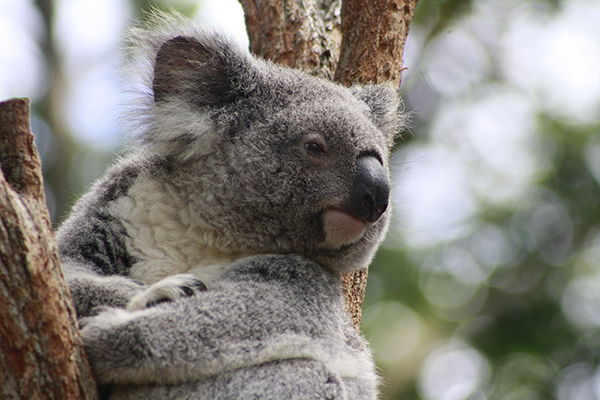Koalas can recover fully from chlamydia with half the antibiotic treatment they currently receive, a researcher from the University of the Sunshine Coast has found.
USC PhD researcher Dr Amy Robbins, who led a study across 167 cases, said koalas with chlamydia had previously been prescribed 45 days of antibiotic treatment, but the study found a course that lasted between 14 and 28 days led to similar success.
“So even when the antibiotics have done their job and the infection has gone, in the past we’ve often continued to treat them based on the residual symptoms caused by inflammation and scarring, which can take a while to settle down,” Dr Robbins said.
“We found that while the symptoms may remain, the infection had cleared in less than 28 days.”
She said the findings could allow clinics to spread resources further by completing treatments sooner and releasing cured koalas back into the wild, in turn reducing the risk of complication and ultimately allowing them to treat more koalas for the debilitating condition.
“We’re not talking about reinventing the wheel, it’s just a refinement of the current treatment protocol, and the next step is to see if we get the same results cutting the treatment window to just 14 days.”
The four-year study, published in PlosOne was conducted at Endeavour Veterinary Ecology at Toorbul in Queensland on behalf of Queensland’s Department of Transport and Main Roads for the Moreton Bay Rail Project.
Another finding from the study was that females who had lost the ability to breed because of chlamydial disease could be re-introduced to the wild after treatment without the risk of further infecting others.
“There has previously been concern that sterile females are shedding chlamydia to other koalas but if they’re treated appropriately the data don’t really support that,” Dr Robbins said.
“None of them got chlamydia again after an ovariohysterectomy and antibiotic treatment. They can just go out and live their lives without breeding or fear of re-contracting the disease.”
She said it was important to understand the bacteria to treat it effectively and is continuing her research into how to prevent some of the negative outcomes of the infection, like infertility.
“In some areas koala populations have decreased by 80 percent so we need to ensure chlamydia doesn’t stop the females from breeding successfully, so the populations are able to recover.”
Media: Janelle Kirkland, jkirklan@usc.edu.au, 07 5459 4553.
Media enquiries: Please contact the Media Team media@usc.edu.au

